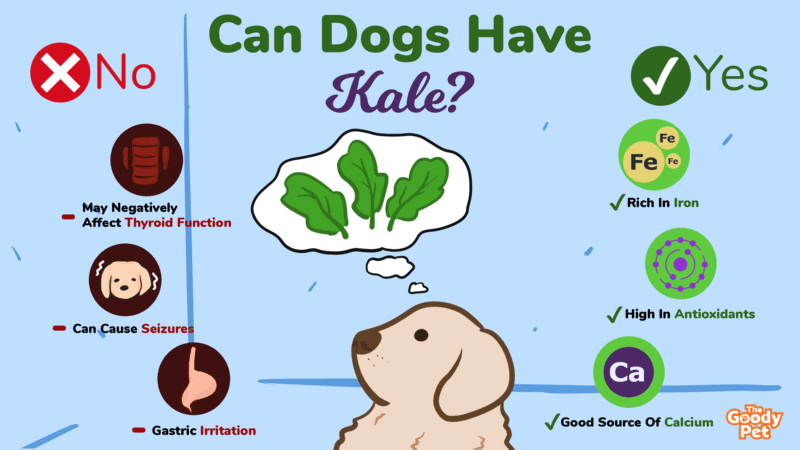Kale is a trendy healthy food in the United States, and throughout the world, so it’s interesting to know if your pooch may benefit from it as well. Kale can be diced and put on a dish, eaten alone, combined in smoothies, or even added to food.
If you have a bunch of kale in the crisper of your refrigerator, you could be tempted to feed it to your pooch. And besides, kale is a vitamin and mineral-rich superfood. However, with all the controversies surrounding it, can dogs have kale?
Yes, you can incorporate kale into your dog’s meal as a supplement or give it as a nice treat. Some sources may argue that kale is harmful to dogs. However, if kale is given in small amounts, you may provide your dog with the nutritional benefits of this vegetable without causing any harm.
It’s great that you wondered about whether kale should or shouldn’t be considered part of your dog’s diet. However, you must make the final decision regarding every new addition to your dog’s food. As you read on, the factors to consider before starting to feed your pooch kale will be discussed.
Is Kale Safe For Dogs?
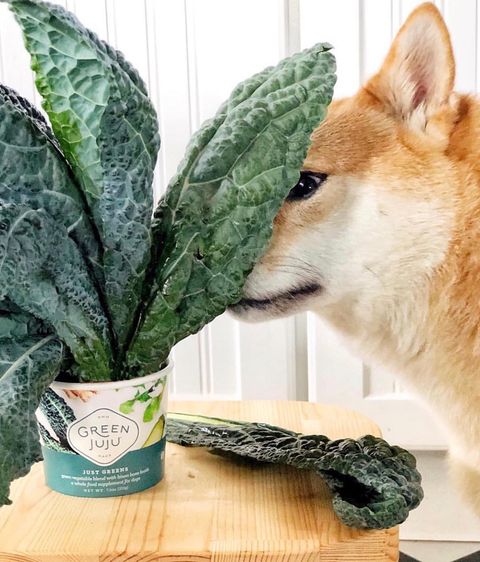
Yes, dogs can safely eat kale in small amounts. However, even though a small percentage of kale is likely to be harmless, not all dogs react in the same manner.
If you really want to give your pooch kale, keep in mind that there are plenty of other veggies you might give them instead.
The issue with kale for pups is that, while the nutritional benefits for people appear to be limitless, the benefits for dogs have yet to be extensively studied.
Some vets may advise you not to use kale as a treat or as a regular part of your dog’s homemade food, especially if your dog has underlying medical conditions.
If you really want to know the benefits that your dog may get from kale, continue reading this section.
What Are The Benefits Of Kale To Dogs?
While the experts are still out on how much kale can help your dogs, it is said to be high in fiber and low in calories, and it’s full of minerals and vitamins. If your pooch is one of the few that can take a small percentage of kale, your pooch is in for a pleasant surprise.
Some of the advantages of feeding kale to you and your dog are as follows:
Good Source Of Calcium
Kale contains a lot of calcium from plants. Calcium is an essential mineral for bone and tooth health. Kale, which also contains oxalate, aids in the absorption of calcium.
Unfortunately, oxalate can cause complications in certain dogs, particularly those that are vulnerable to bladder stones.
Good Source Of Fiber
Kale is a rich source of dietary fiber, which helps with digestion. It’s important to keep in mind that too much fiber can cause issues, so only feed your dogs kale moderately. Additionally, the fiber in this veggie can aid your pup’s bowel movement.
Feeding kale to dogs can help them feel full because it is full of fiber and low in calories. So, if your pooch is attempting to lose weight, you may consider adding kale to their usual dog diet to help them consume less food.
Rich In Iron
Like several other dark leafy greens, Kale is high in iron, which aids in anemia prevention. Dogs will acquire the majority of their iron through meat, but kale can be a great alternative for them.
Contains Vitamins
Kale is high in vitamin C, which helps to keep the skin, immune system, and connective tissue in good shape. Dogs don’t need this from outside sources because they can make it themselves. Kale, on the other hand, is a wonderful choice for individuals trying to increase their vitamin C intake.
Vitamin E is present as well, which aids the immune system. Lastly, kale is high in vitamin K, which is necessary for your dog’s blood clotting abilities. This is also beneficial to heart and bone health.
High In Antioxidants
The antioxidant is a compound that neutralizes free radicals, which produce oxidative damage to the body’s cells.
That being said, antioxidants can aid in the fight against free radicals and the prevention of oxidative damage, which is a leading cause of cancer. Further research into the effect of veggies in cancer prevention is needed, although the studies seem interesting.
Is Kale Toxic To Dogs?
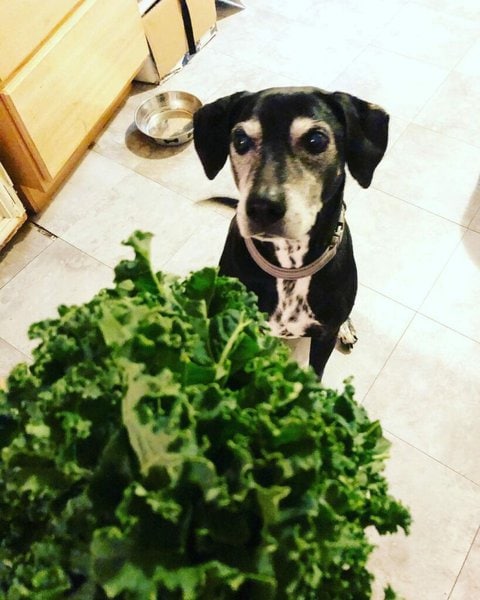
Kale is not toxic, and little amounts are unlikely to harm your dog, but the substances found within it may cause issues. However, if kale is given in big quantities or on a regular basis, this can be toxic.
In this section, the possible dangers of kale to dogs will be thoroughly discussed. Keep on reading so you can learn more about it.
What Are The Dangers Of Kale To Dogs?
While there are certain advantages to giving kale to canines, it is not always a wise idea. As previously said, kale is not suitable for all dogs. Natural chemicals in kale have the potential to hurt your dog. Isothiocyanates and calcium oxalate are examples of natural compounds that may harm your pooch.
Similarly, too much kale may cause your pooch to have some bad gas. If your pooch consumes kale on a regular basis, it may affect its thyroid function. This is due to the fact that they include chemicals that can store iodine in the body of your pooch.
Thyroid Function May Be Negatively Affected
Allowing your pup to consume significant amounts of leafy vegetables such as kale may have a negative impact on its thyroid function. If your pup has hypothyroidism and is receiving medication for it, it may be appropriate to give a different treat.
Gastric Irritation
Kale is high in isothiocyanates, a type of chemical compound. Isothiocyanates are known to lessen the risk of cancer and provide other advantages in humans, but they can induce intestinal discomfort in dogs. This can result in vomiting, nausea, and diarrhea.
Isothiocyanates are generally deemed harmless as long as they account for less than 10% of your pup’s normal intake.
On the other hand, consuming more than 25% is deemed toxic. Too much kale can irritate your dog’s stomach. If you suspect your dog ate too much kale, look for signs of gas, bloating, diarrhea, or nausea and contact your vet as soon as possible.
Kidney And Bladder Stones
Stones in the kidneys and bladder are caused by calcium oxalate. Kale should be avoided by canines who have had bladder stones in the past or who are at a higher risk of acquiring them. Calcium oxalate stones are more common in the following breeds, so exercise special caution with these breeds:
- Bichon Frise
- Shih Tzu
- Lhasa Apso
- Miniature Schnauzer
- Yorkshire Terrier
Can Kale Make Dogs Sick?
In general, kale is harmless and nutritious, so it shouldn’t make your pooch sick if it is an adult who’s only eating a small amount of it. Kale, like most vegetables, has the ability to make your dog sick if they consume much of it as well as if they have a sensitive stomach.
Kale will cause your dog stomach pains, gas, and diarrhea if consumed in great amounts. If even a small amount of kale is consumed, certain dogs with sensitive stomachs may become sick.
Can Dogs Be Allergic To Kale?
Kale may cause an allergy in your pooch, just like any other food. You’ll be able to tell whether your dog is allergic to this leafy green vegetable. Your dog may feel a tiny amount of gas, which is a clear indication that this supplement isn’t suited for their diet.
Does Kale Cause Gas In Dogs?
Kale can cause gas, so be cautious when adding it to your doggie’s diet. Gas can be avoided by cooking and finely cutting this vegetable. You may want to limit offering your pooch kale to ease your mind with this condition.
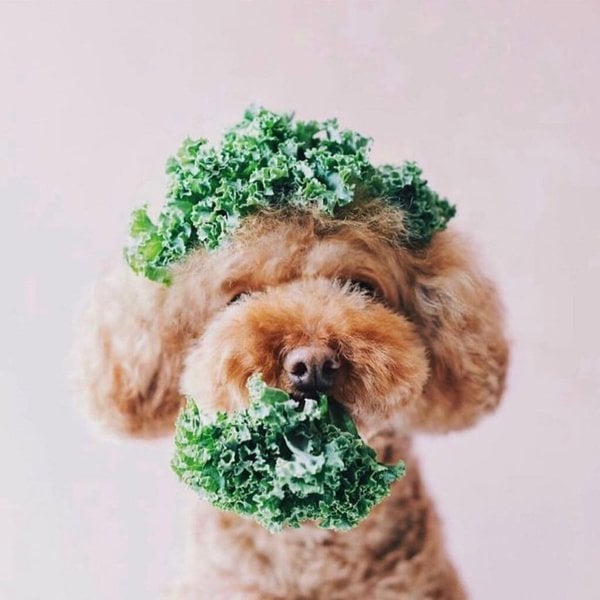
Can Kale Cause Seizures In Dogs?
Kale can cause seizures in dogs since it has a natural chemical called thallium. Thallium poisoning can occur if your dog consumes too much kale.
Although most experts believe that a dog would have to consume a large amount of kale to become poisoned, thallium is a heavy metal identical to lead that can remain in the body for a long time and cause toxicity.
The symptoms of thallium poisoning in dogs are as follows:
- Seizures
- Vomiting
- Diarrhea
- Elevated body temperatures
Can Diabetic Dogs Eat Kale?
Leafy green vegetables such as kale can be eaten by diabetic dogs. If your dog has diabetes, grains and meats should be consumed in moderation, and fresh vegetables should be included in their diet.
Can Dogs Eat Kale Every Day?
You must only offer your dog relatively little amounts of kale on rare occasions. It should never constitute more than 10% of its daily intake. You could upset your dog’s stomach if you don’t.
So generally, your dog shouldn’t be given kale every day. But can they eat raw kale, kale stems, and chips? Keep on reading to know more about it.
Can Dogs Eat Raw Kale?
As per veterinarians, kale is safe to eat raw if your dog doesn’t really fall into any of the categories explained in this article, for which it may be dangerous. You should keep in mind that your pooch may dislike the flavor of raw kale. In that event, you might want to experiment with different ways to offer kale to your dog.
Raw kale, in particular, includes a form of goitrogen known as goiters. This implies that if your pup is of a breed that is much more prone to thyroid disease, or if your pup has already been diagnosed with thyroid disease, it is best to avoid putting kale in your dog’s meal plan.
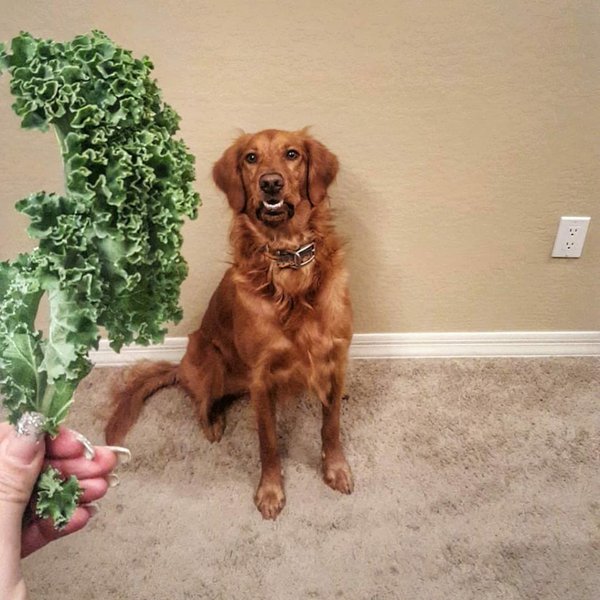
Can Dogs Eat Kale Stems?
Dogs can eat kale stems. But although kale stems and ribs are edible, they are fibrous, hard, and bitter. You would usually remove the stem because they are unpleasant to eat.
Some individuals, on the other hand, may throw the stem to the pup in the anticipation that it will appreciate it as a crunchy treat. Your dog may enjoy them, and they may provide some nutrients, but the high oxalate level poses the same hazards as kale leaves.
Can Dogs Eat Kale Chips?
Kale chips are safe for dogs to eat. Make sure the kale chips don’t have any seasonings that could be harmful to your pup’s health, such as paprika, onion, garlic, or anything else that’s exceptionally spicy for a dog.
Kale chips are a terrific way to provide your pooch with the nutrients and vitamins it requires without adding fat or calories to its diet. However, because kale has a lot of fiber, it’s essential not to feed your pooch too much in one sitting.
How Much Kale Can I Give My Dog?
As long as you stick to the 10% rule, your pup can safely eat kale. The remaining 90% of their calories must come from complete dog food, which will guarantee that they obtain the right balance and necessary nutrients to be healthy and happy.
That means snacks, treats, and other complementary food should account for no more than 10% of your dog’s recommended daily calorie limit. Kale is one of them. Your pup should be alright as long as they consume only about 10% of their daily calorie intake from kale.
Simply keep a close eye on your dog and stop feeding them if they become restless or exhibit any other symptoms of stomach discomfort. Instead, offer them lesser amounts of kale in the future. If you have any concerns, you should consult your veterinarian.
Now that you have the knowledge of how much kale your dog can have, you are definitely looking for ideas on how to safely prepare kale for your dog. No worries, we have already done some research to save you time.
How To Prepare Kale For Dogs?
The way you cook kale for your dog differs from how you would prepare it for yourself due to the differences in digestive processes. There are several ways to cook and offer kale for your dog, whether you steam it as a treat or serve it alongside a dinner.
Kale can also be cooked if no other ingredients are added. Introduce it gradually, just as you would any new food.
Wash It Thoroughly
With kale, pesticide exposure is a definite possibility. Allowing your dog to eat organic kale is one way to avoid this. Otherwise, just properly wash your greens before serving them to your pooch.
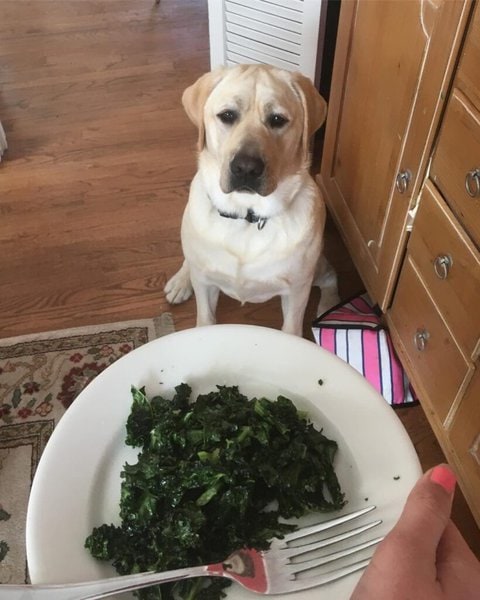
Avoid Any Additives
Oils, spices, as well as other herbs may be dangerous to your pooch. If they don’t like the flavor, serve it plain or with other veggies. You can briefly steam or blanch the kale if your pooch likes it cooked. Serve this food simple or without oils or seasoning, either raw or lightly cooked.
Serve Moderately
Most canines are much more sensitive than others, so take that into consideration. As a result, after consuming a small amount of kale, your pup may get an upset stomach or feel gassy.
If it’s your dog’s first time eating kale, start with a little bite. This way, you can watch your dog’s behavior and intervene if there are any signs of being nauseous.
What To Do If My Dog Eats Kale?
If your pooch consumes kale, the smartest way you can do is keep an eye for signs of digestive discomfort, as well as kidney and bladder stones. Vomiting, diarrhea, urinating difficulties, or changes in urination patterns are all indicators that your dog may be suffering from a bladder stone problem that necessitates veterinary care.

